 Hartlepool Sports & Leisure
Hartlepool Sports & Leisure
- Cinemas, Theatres & Dance Halls
- Musicians & Bands
- At the Seaside
- Parks & Gardens
- Caravans & Camping
- Sport
 Hartlepool Transport
Hartlepool Transport
- Airfields & Aircraft
- Railways
- Buses & Commercial Vehicles
- Cars & Motorbikes
- The Ferry
- Horse drawn vehicles
 A Potted History Of Hartlepool
A Potted History Of Hartlepool
- Unidentified images
- Sources of information
- Archaeology & Ancient History
- Local Government
- Printed Notices & Papers
- Aerial Photographs
- Events, Visitors & VIPs
 Hartlepool Trade & Industry
Hartlepool Trade & Industry
- Trade Fairs
- Local businesses
- Iron & Steel
- Shops & Shopping
- Fishing industry
- Farming & Rural Landscape
- Pubs, Clubs & Hotels
 Hartlepool Health & Education
Hartlepool Health & Education
- Schools & Colleges
- Hospitals & Workhouses
- Public Health & Utilities
- Ambulance Service
- Police Services
- Fire Services
 Hartlepool People
Hartlepool People
 Hartlepool Places
Hartlepool Places
 Hartlepool at War
Hartlepool at War
 Hartlepool Ships & Shipping
Hartlepool Ships & Shipping

Irvine Currie & Co. 1864-1866
R. Irvine & Co. 1866-1881
Irvine & Co. 1881-1898
Irvine’s Shipbuilding & Dry Docks Co. Ltd. 1898-1930
Irvine’s Shipbuilding & Dry Docks Co. (1930) Ltd. 1930-1938
Irvine Currie and Company was formed in 1863, with the partnership of Robert Irvine and Alexander Currie. Their first ship, the Island Queen, was launched in August 1864. A further four ships were produced up to 1866, when the yard closed temporarily to allow the building of a dry-dock. At this time the partnership was dissolved.
Between 1866 and 1870 the yard concentrated on repair and overhauling work, gaining a reputation as salvers of stranded and sunken ships. Shipbuilding recommenced with the launch of the Fuh-Le in 1870. After the death of his wife in 1882 Robert Irvine began to withdraw from the running of the firm and by 1887 the entire concern had been handed over to his heirs, led by his son, Robert Jnr.
The yard was modernised in 1887 and Christopher Furness became the principal shareholder, with the firm renamed as Irvine's Shipbuilding and Dry Docks Company Limited. In 1909 the yard was combined with the Furness, Withy and Company's shipyard at Middleton and continued trading throughout several changes of ownership until the financial depression in the 1920s. Work ceased in 1924 and the yards were closed in 1925.
The company went into liquidation in 1930. Some of the assets were purchased by a syndicate, but this mainly concentrated on repair work and shipbreaking. In 1938 the syndicate was bought out. The Port Authority maintained part of the yards, which were a valuable asset during the Second World War. In later years they gradually fell into disuse.
Related items :
 Elsie - SH 280 (1)
Elsie - SH 280 (1)
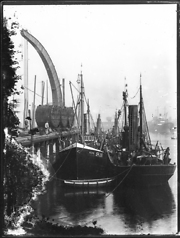 Created by unknown
Donated by Hartlepool Library Service
Created by unknown
Donated by Hartlepool Library ServiceThe steam trawler Elsie and four others alongside Irvine's Quay - probably to have new boilers fitted. The Elsie was bought by James Pattison of West Hartlepool, in 1928 and then sold in 1934 to the Stanley Steam Fishing Co Ltd, Fleetwood. More information on this vessel can be found at http://www.fleetwood-trawlers.info
HHT&N 787
More detail » Harbour Yard Platers 1911
Harbour Yard Platers 1911
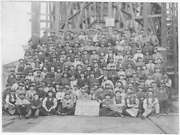 Part of the Hartlepool Library Services collection
Part of the Hartlepool Library Services collectionA group photo of the Irvine's Harbour Yard Platers from 1911.
More detail » Irvine's Harbour Yard
Irvine's Harbour Yard
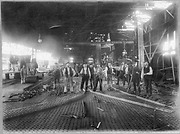 Donated by Hartlepool Library Service
Donated by Hartlepool Library ServicePart of the Hartlepool Library Service collection
Frame bonding at Irvines Harbour Yard, Hartlepool.
More detail » Irvine's Harbour Yard
Irvine's Harbour Yard
 Donated by Hartlepool Museum Service
Donated by Hartlepool Museum ServicePart of the Shipbuilding collection
Ships under construction at Irvine's Harbour Yard.
More detail » Irvine's Quay - Middleton Shipyard (1)
Irvine's Quay - Middleton Shipyard (1)
 Donated by Hartlepool Museum Service
Donated by Hartlepool Museum ServiceIrvine's Quay, Middleton Shipyard showing method of construction. Swan Neck Crane and CMEW Hammer Head Crane in the background.
More detail » Irvines Quay, Middleton Shipyard
Irvines Quay, Middleton Shipyard
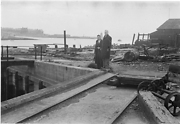 Donated by Hartlepool Museum Service
Donated by Hartlepool Museum ServiceTwo men stood on Irvine's Quay, Middleton Shipyard. Area appears derelict.
More detail » Irvines Shipyard 1914
Irvines Shipyard 1914
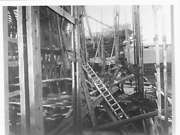 Donated by Douglas Ferriday
Donated by Douglas FerridayPart of the Hartlepool Library Service collection
Irvines Shipyard 1914
More detail » Middleton Shipyard
Middleton Shipyard
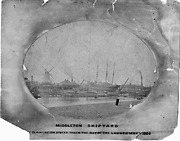 Donated by Hartlepool Museum Service
Donated by Hartlepool Museum ServiceMiddleton Shipyard. MV Blanche on stocks on the day of her launch in May 1864. Windmill to the left.
More detail » Patrick Buckley
Patrick Buckley
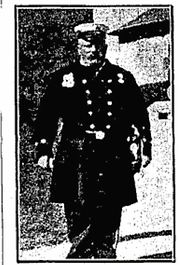 Donated by John Considine
Donated by John ConsidineChief Officer of Coastguard at Crosshaven who had command of the rocket crew on the night on which the Snowdon Range drifted into Cork Harbour, and whose association with rescue work of a daring character.
More detail » Snowdon Range
Snowdon Range
 Donated by John Considine
Donated by John ConsidineThe large picture above is the results of six weeks of bufferting by hurricanes, damage on board the "Snowdon Range" showing the broken wheel.
The smaller picture shows the chief hero of the "Snowdon Range" Captain Dickinson whose fine seamnship saved the vessel.
On arrival at Queenstown, (Cobh) the "Snowdon Range" bore obvious signs of the terrible bufferting she had experienced. The rudder was gone, the wheel was broken, the boats were shattered or lost and the rails and ironworks were twisted into all kinds of shapes. While she was finally brought into port, all the sirens blew a welcome, and the people onshore cheared the Captain and crew.
Captain Dickinson received a telegraph from Mr. Stephen Furness, M.P Chairman of Furness, Withy & Co, owners of the "Snowdon Range" saying " We are ...very proud of you all and all members of the crew."
Also, a telegram of congratulations from Sir. Walter Runciman. Captain Dickinson comes from Sunderland.
More detail »
 Trawler at the Quay
Trawler at the Quay
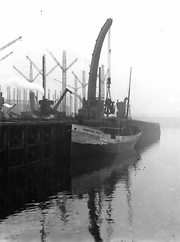 Donated by unknown
Donated by unknownPart of the Hartlepool Library Service collection
An undated (and fairly grainy) image of an unidentified trawler alongside Irvine's Quay. She appears to be a Grimsby vessel, although her name and Registration Number have been painted out, and her engine is either being lifted in or out.
More detail » Triton (1)
Triton (1)
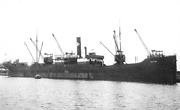 Donated by Hartlepool Museum Service
Donated by Hartlepool Museum ServicePart of the Storrow collection
The steamship Triton. Built at Irvine's shipyard in 1908.
More detail » West Hartlepool Worthies
West Hartlepool Worthies
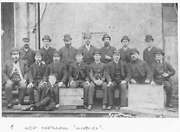 Part of the Hartlepool Library Services collection
Part of the Hartlepool Library Services collectionThis appears to be the Foremen from Irvines shipyard. They have called themselves the West Hartlepool Worthies.
More detail »



